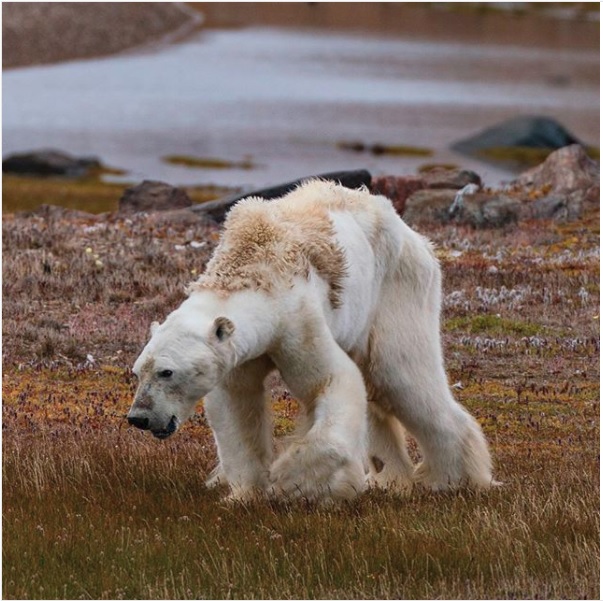“Mi equipo entero de Sea Legacy (Legado del Mar) estaba luchando contra sus propias lágrimas y emociones mientras documentábamos a este oso polar muriendo de hambre”, manifestó el fotógrafo Paul Nicklen, quien tomó las desgarradoras fotos y captó los videos.
La imagen fue destacada por el canal de televisión National Geographic (NatGeo) y rápidamente se volvió viral.
Hay varias fotos del animal moribundo tomadas tanto por Nicklen y la fotógrafa Cristina Mittier Meier, que forman parte del equipo de Sea Legacy, una organización dedicada al cuidado y conservación de la vida marina.
“Es una escena que te rompe el alma y que aún me persigue”, agregó Nicklen, cofundador de Sea Legacy, en la publicación en su cuenta de Instagram.
Según Meier, las imágenes fueron captadas hace unos meses pero publicadas recién este jueves.
“Así es como se ve el hambre. Los músculos atrofiados. Sin energía. Es una muerte lenta y dolorosa. Cuando los científicos dicen que los osos polares estarán extintos en los próximos 100 años, pienso en que la población de 25.000 osos pueda morir así”, expresó.
El fotógrafo explica que no hay soluciones fáciles al problema y dice que no habrían podido hacer nada para salvar al oso.
“La verdad simple es que si la Tierra sigue calentándose, perderemos a los osos y los ecosistemas polares”, afirma.
“Debemos reducir nuestra huella de carbono, comer la comida adecuada, dejar de cortar nuestros bosques y empezar a poner a la Tierra, nuestro hogar, como una prioridad”, aseveró el fotógrafo y clama por ayuda para la organización.
El video publicado el miércoles ya acumula más de un millón de reproducciones y miles de comentarios.
En la cuenta de Sea Legacy es posible apreciar más videos del oso, que Nicklen asegura que no tenía la edad para morir, y que pudo haber fallecido días o incluso horas después del encuentro.
En esta publicación, la organización explica que el oso estaba en muy malas condiciones y que sus piernas atrofiadas no habrían podido ser reparadas. “También habría sido ilegal alimentarlo, acercarse a él o incluso hacer cualquier cosa para aliviar su dolor”, explicaron.

